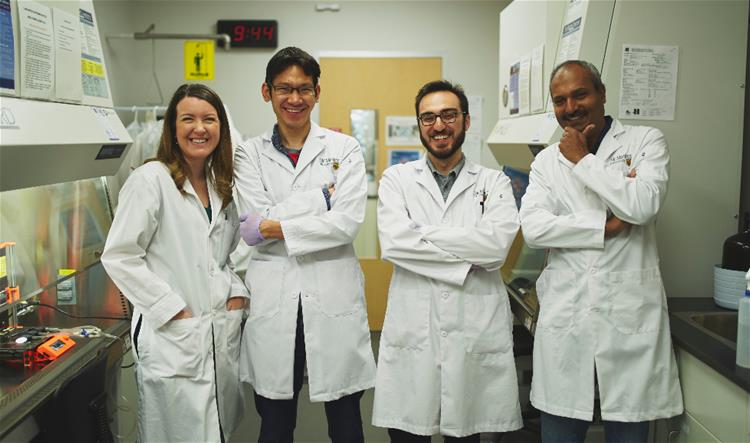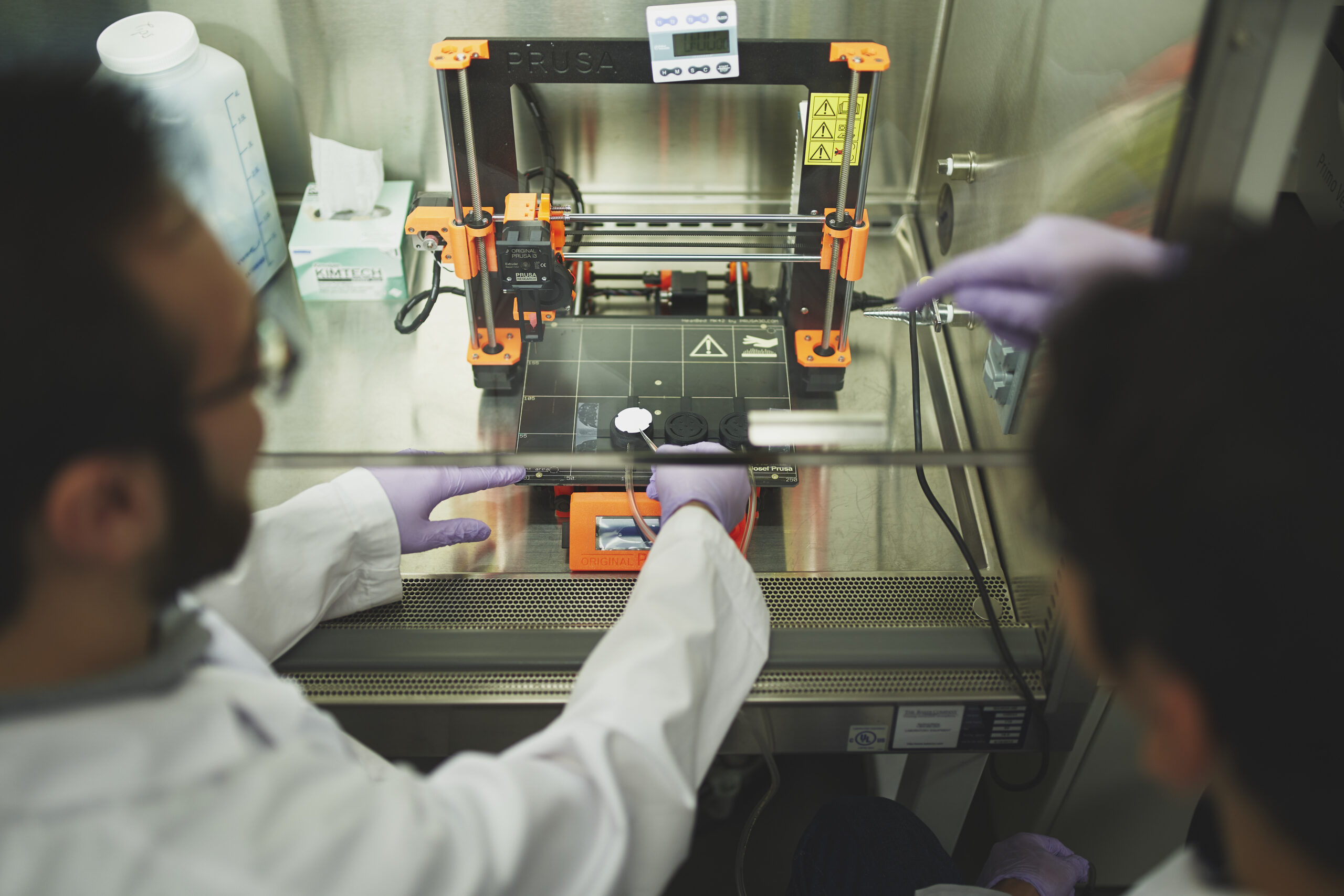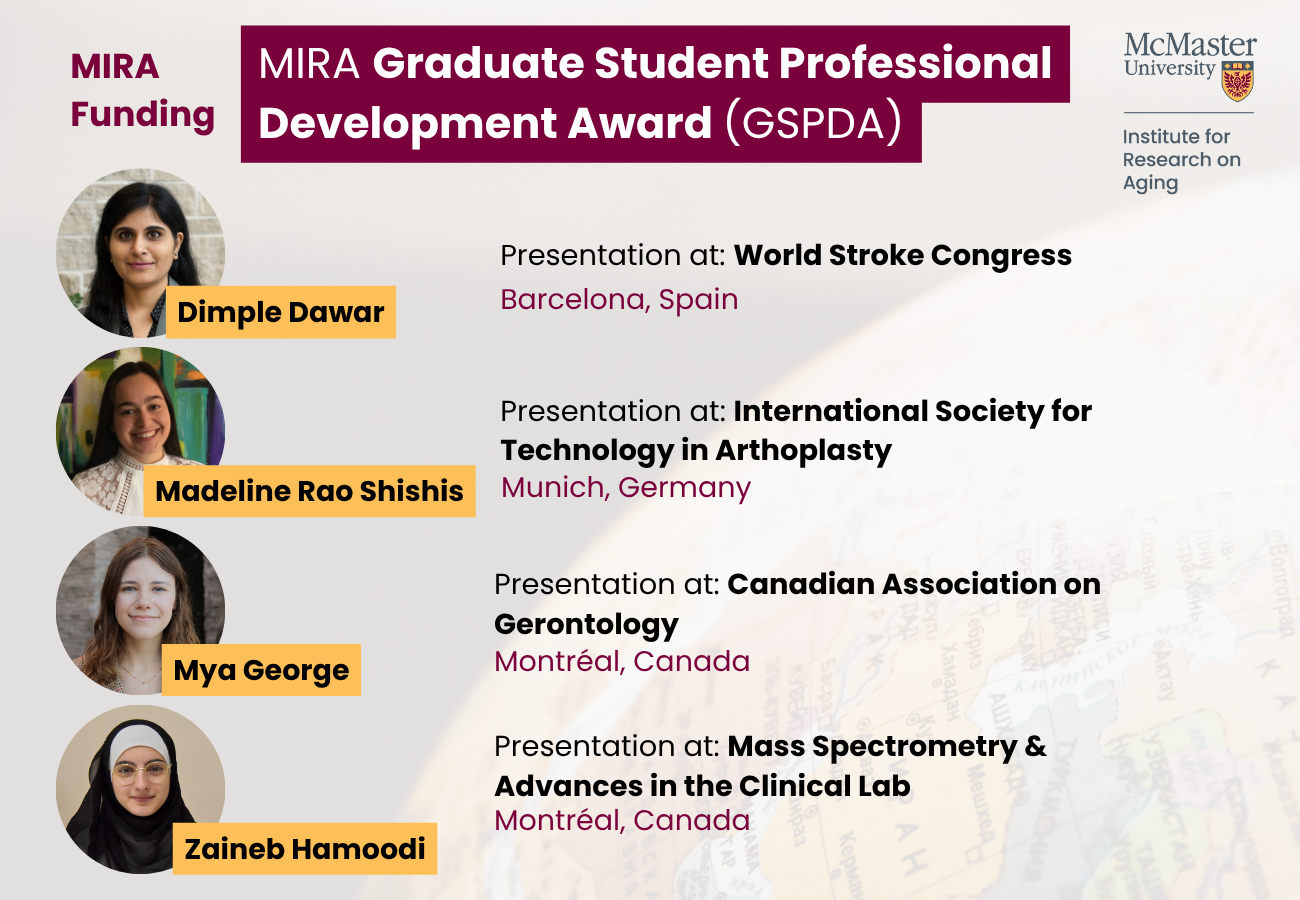
From left to right: Kathryn Grandfield, Bryan Lee, Alireza Shahin-Shamsabadi and Ravi Selvaganapathy
Published: October 18, 2019
Brilliant innovation often comes when the right solution finds the right problem. Or, as biomedical engineering PhD candidate Alireza Shahin-Shamsabadi describes it, “when you find the need for your technique.”
Early last year, in search of new problems to solve, he connected with fellow biomedical engineering PhD candidate Bryan Lee. Both work in the same lab, but on entirely different areas of research.
“Ali just came up to me and starting talking. He said, ‘I’m looking for new ideas of how to do things,’ and we spent an hour or two chatting,” recalls Lee. “That led us to the preliminary idea that turned into this paper.”
Working together, the two developed a new technique that could make it easier for researchers to study how crucial bone building cells respond to aging, trauma and implants.

Their research, outlined in a paper published in the most recent issue of Advanced Biosystems journal and promoted on the back cover, describes a novel, mechanical method of producing osteocytes , key bone-building cells that have typically been difficult to study.
Osteocytes govern the behaviour of osteoblasts and osteoclasts, cells responsible for the deposit and removal of bone.
“When bone becomes compromised, it is often because one of these cells is not working at the appropriate rate,” explains Kathryn Grandfield, an associate professor of biomedical engineering and Lee’s PhD supervisor. “For example, in osteoporosis, which affects over 1.5 million Canadians, the cells that remove bone are more active than the cells that deposit bone.”
The pair used a bio-printing technique to embed live osteoblast cells into a rigid three-dimensional structure to mimic the conditions in bone tissue that lead the cells to transform into osteocytes.

“The techniques needed for these kinds of models didn’t exist before and now people are developing them,” said Shahin-Shamsabadi. “For our collaboration, I made the technique and Bryan had the knowledge of the bone biology, and we combined them.”
They also consulted with McMaster Health Sciences PhD candidate Michael Wong, to fill in a gap in their biology knowledge.
While their research demonstrated success in using this technique with bone cells, Shahin-Shamsabadi says it could easily be used for research with other types of tissues, as well.
Ravi Selvaganapathy, a professor of biomedical engineering and Shahin-Shamsabadi’s PhD supervisor, says he encourages his students to actively seek out opportunities to work with others.
“Part of our experiential training is for students to seek out application areas for the technologies they develop and find collaborating partners to work with,” he says. “This provides them with the soft skills that are essential when they go out to a job in academia or industry, but also teaches them to identify and address new challenges.”
An international student from Iran, Shahin-Shamsabadi admits he was shy to initiate contact because he wasn’t confident in his language abilities, but had heard Lee was doing good work and wanted to connect with him. The success of this partnership has also given him the courage to approach others.
Beyond the tangible success of their partnership in the form of a published paper, both students say their collaboration has resulted in lots of ideas for future research, as well as other less obvious bonuses.
“We both had a fair amount of pride that this was our idea,” says Lee. “Usually your supervisor gives you the playground to work in, but this was us coming up with the idea.
“And while professionally we might go our separate ways, personally we’re very good friends now as a result of this.”
This article was first published by Brighter World. Read the full article here.

